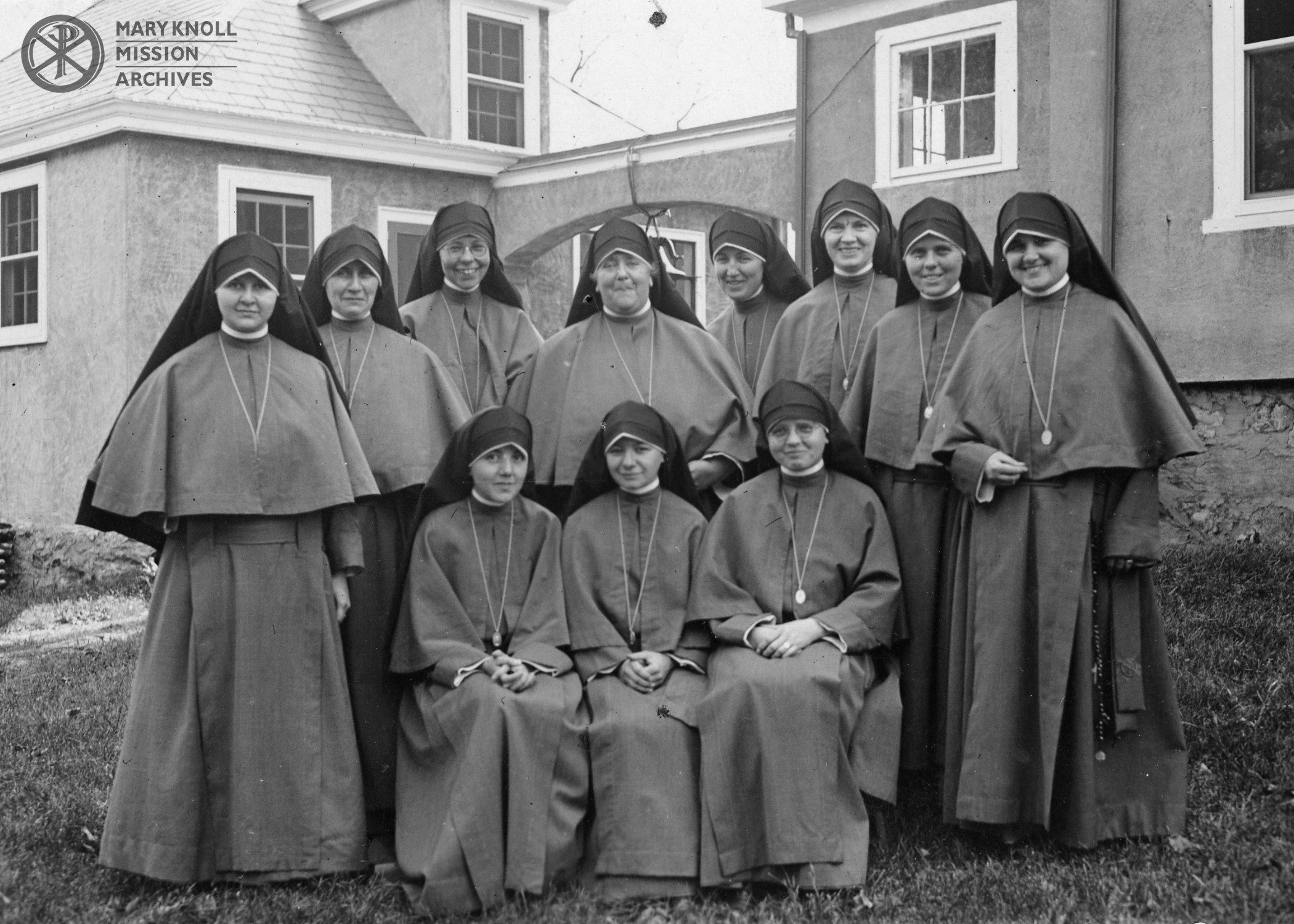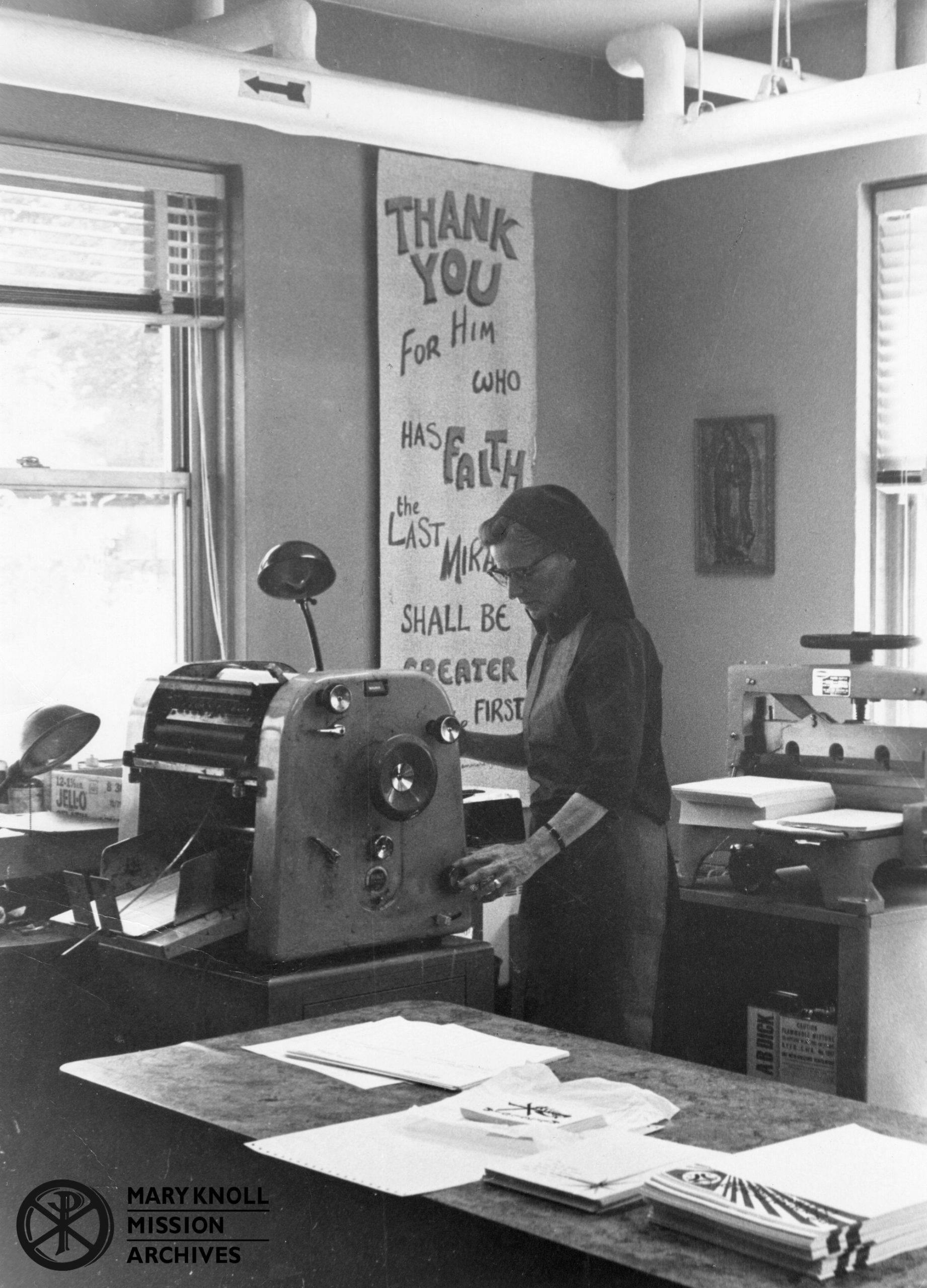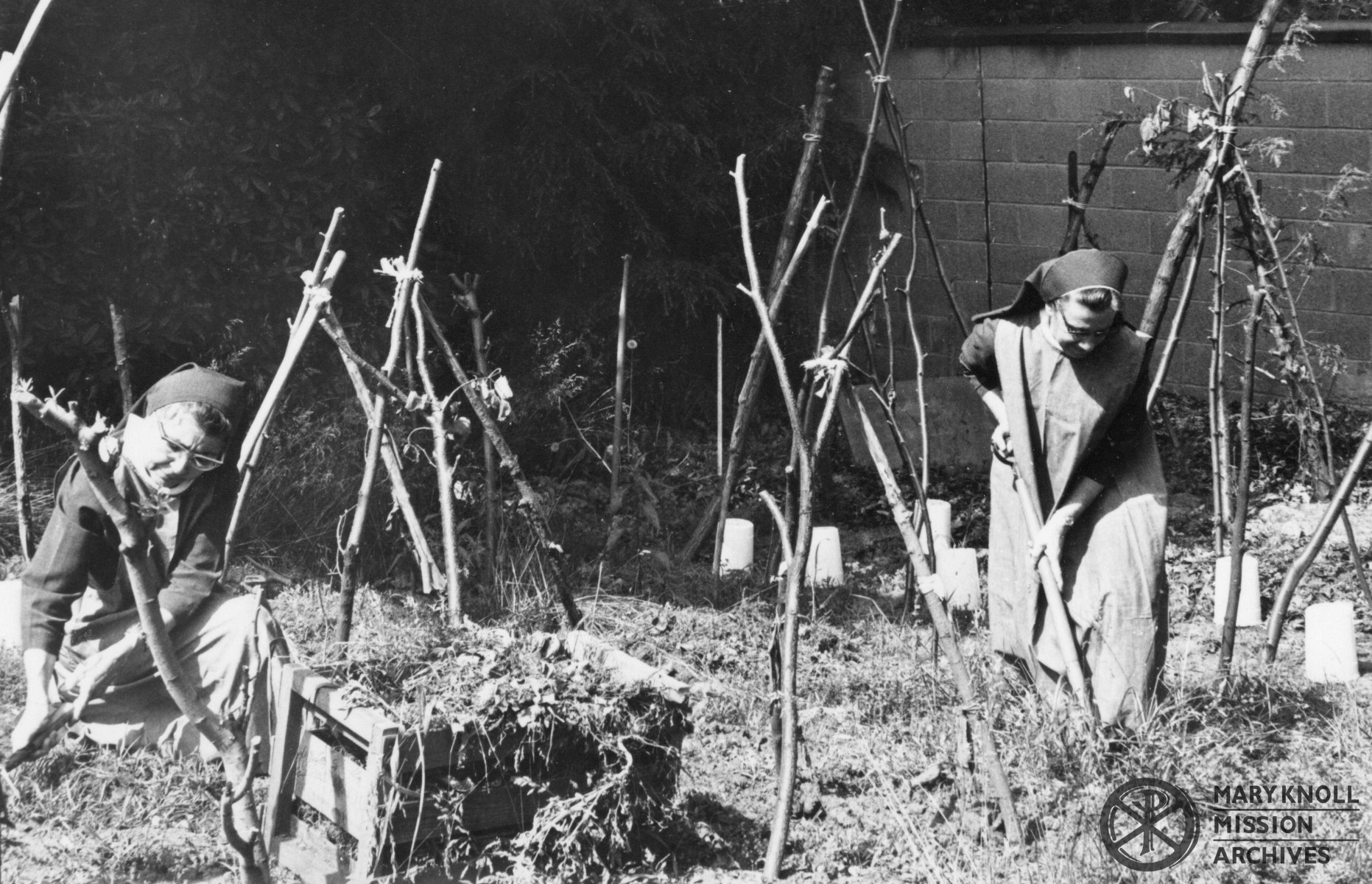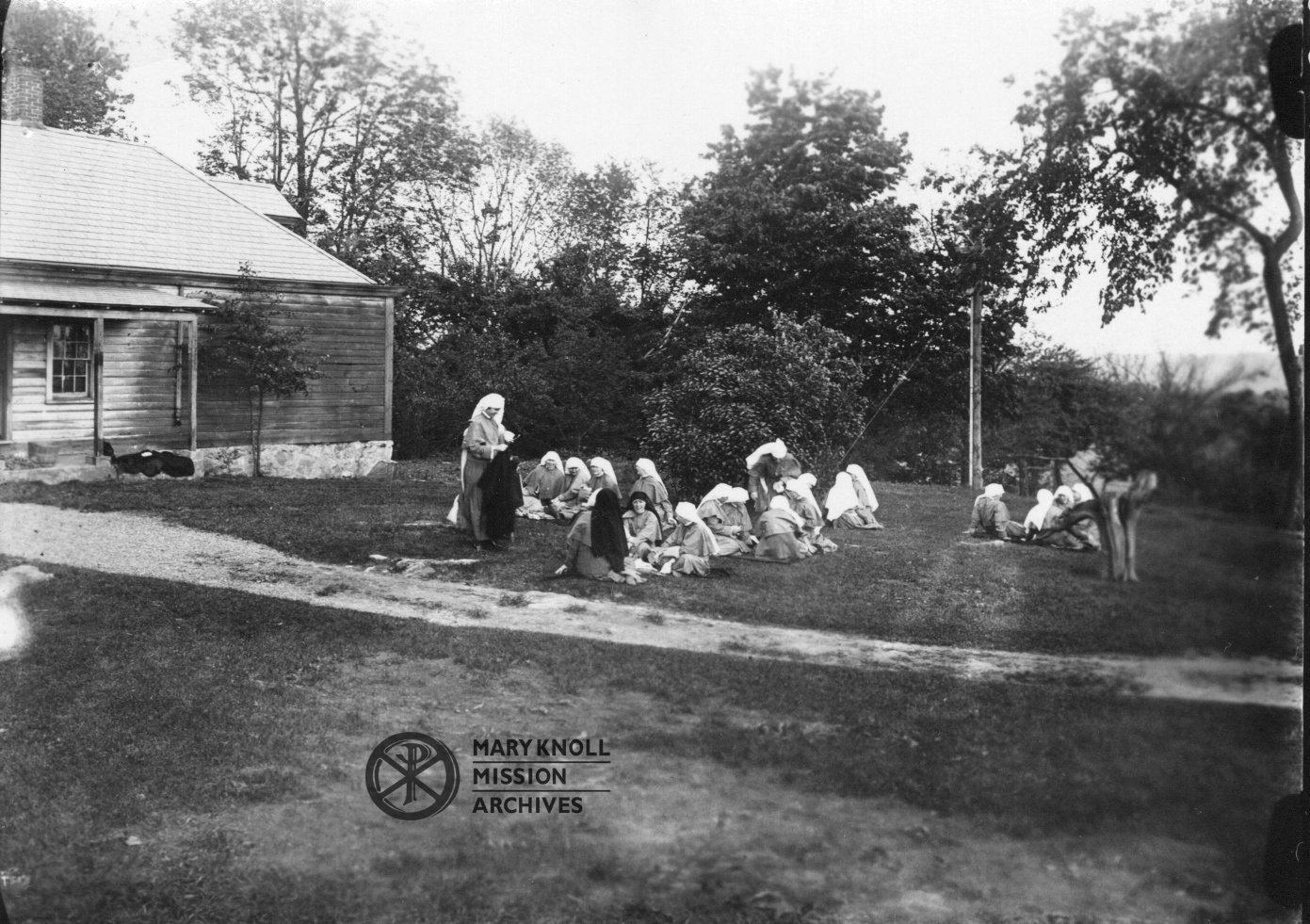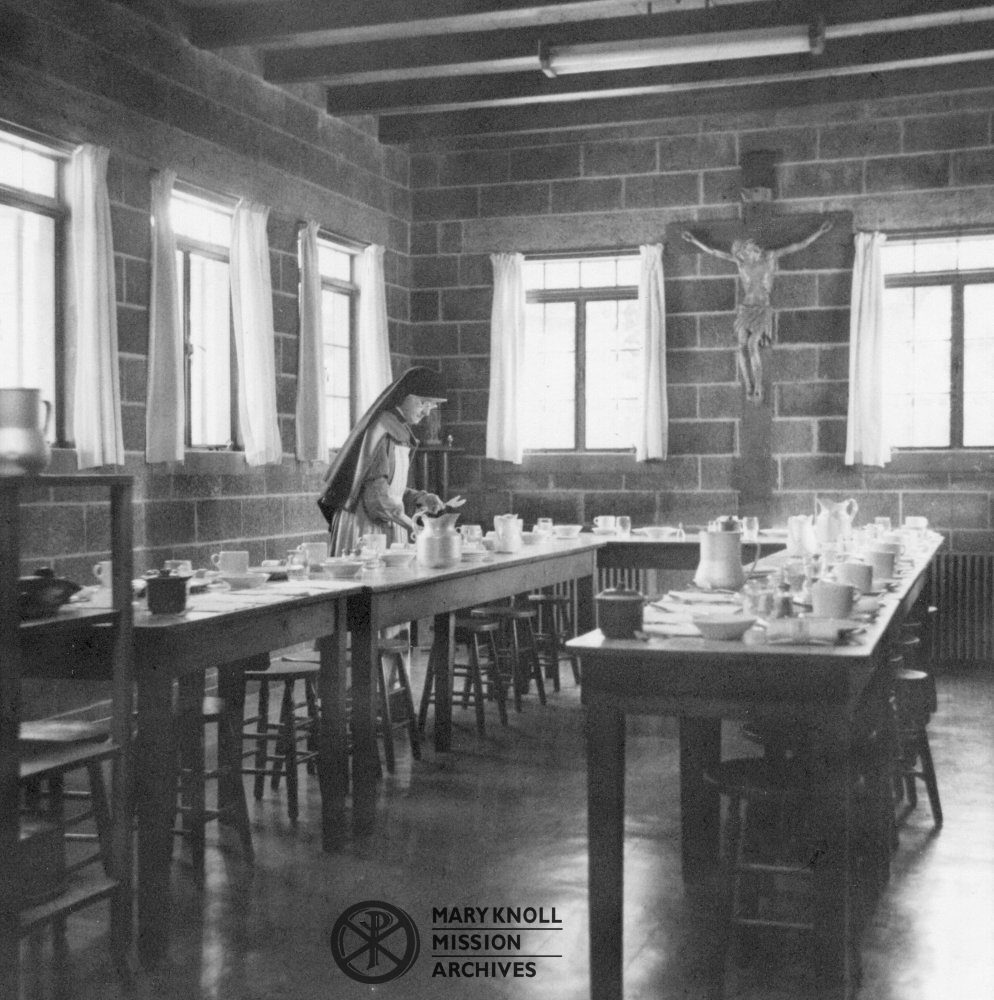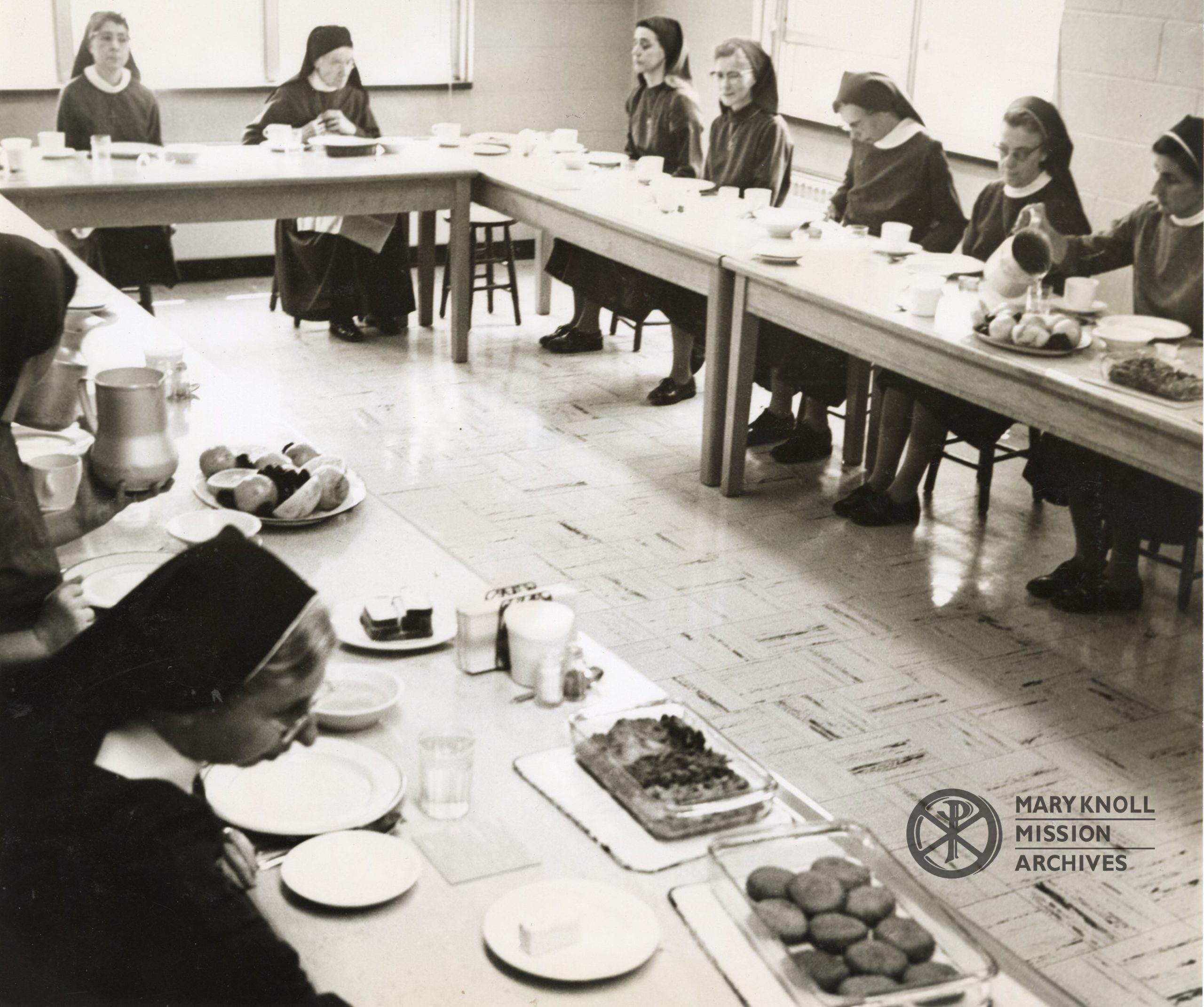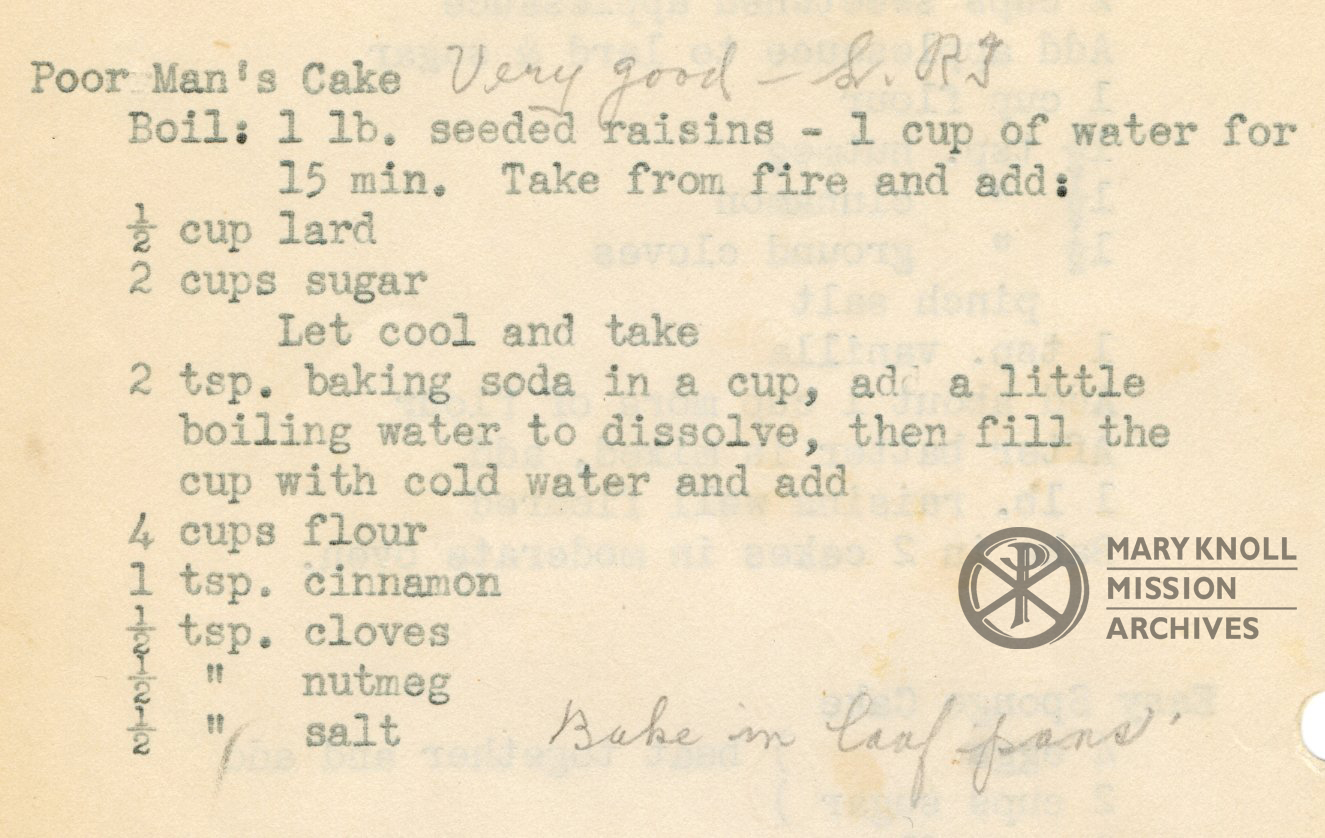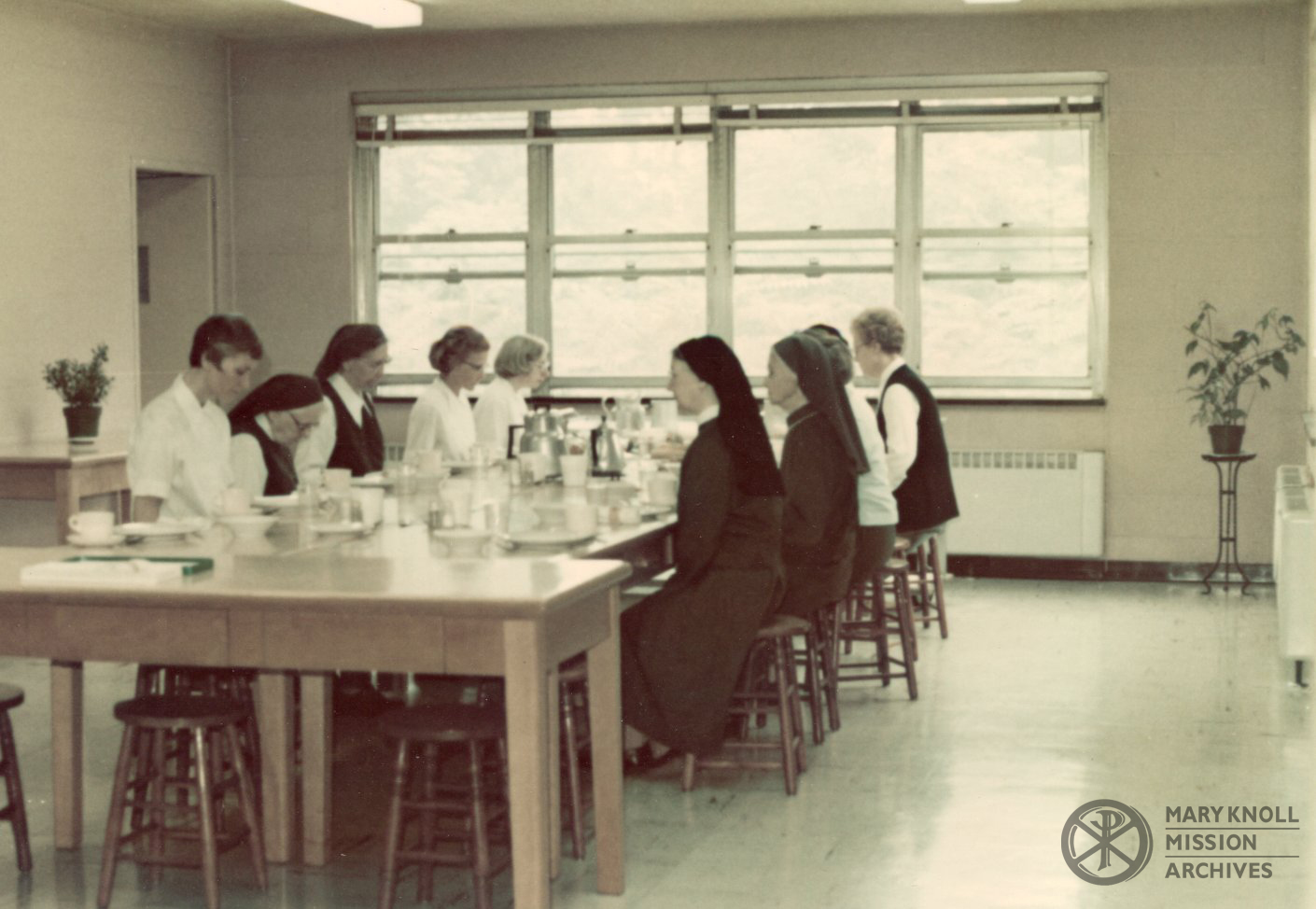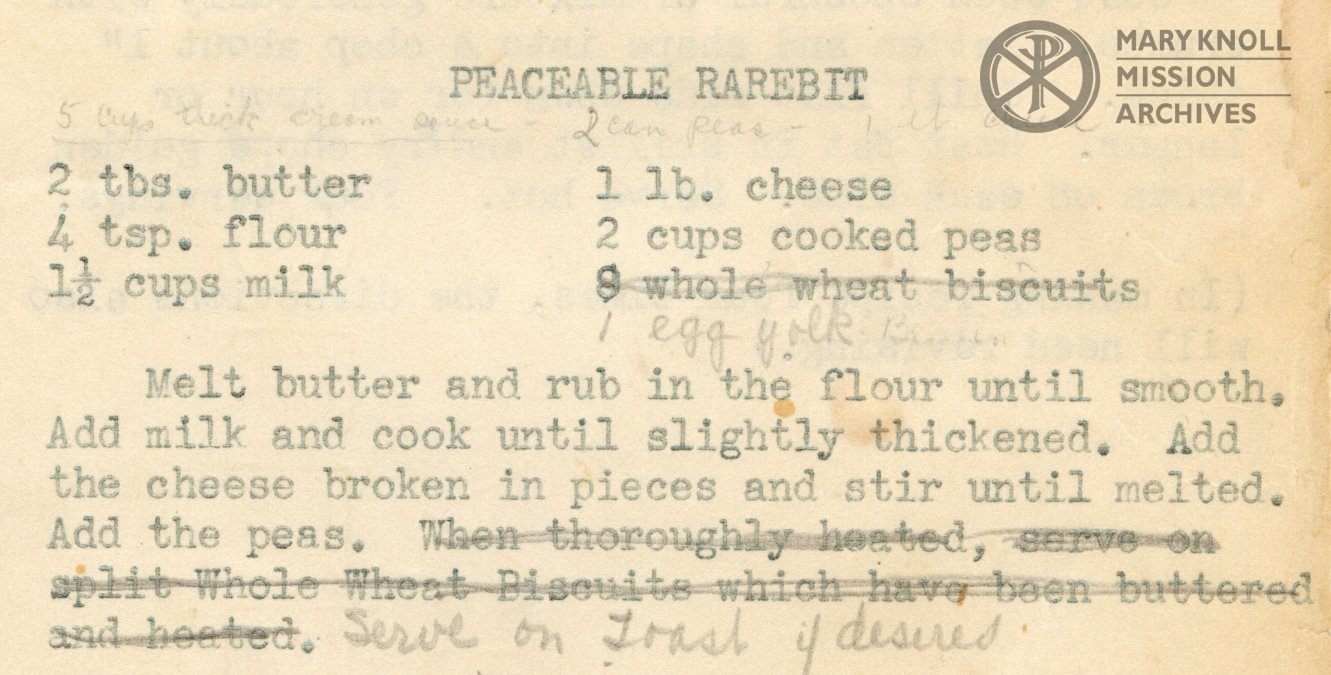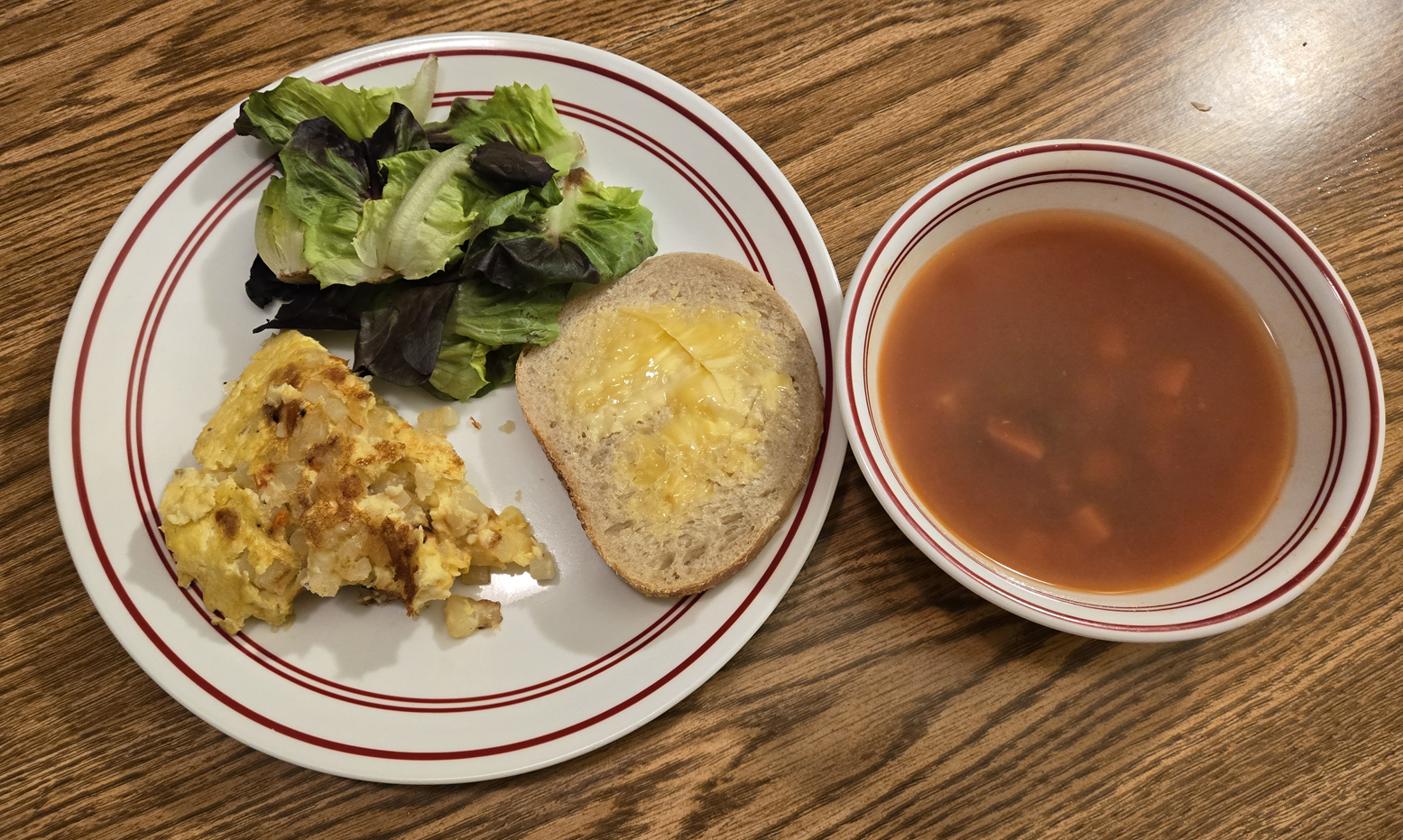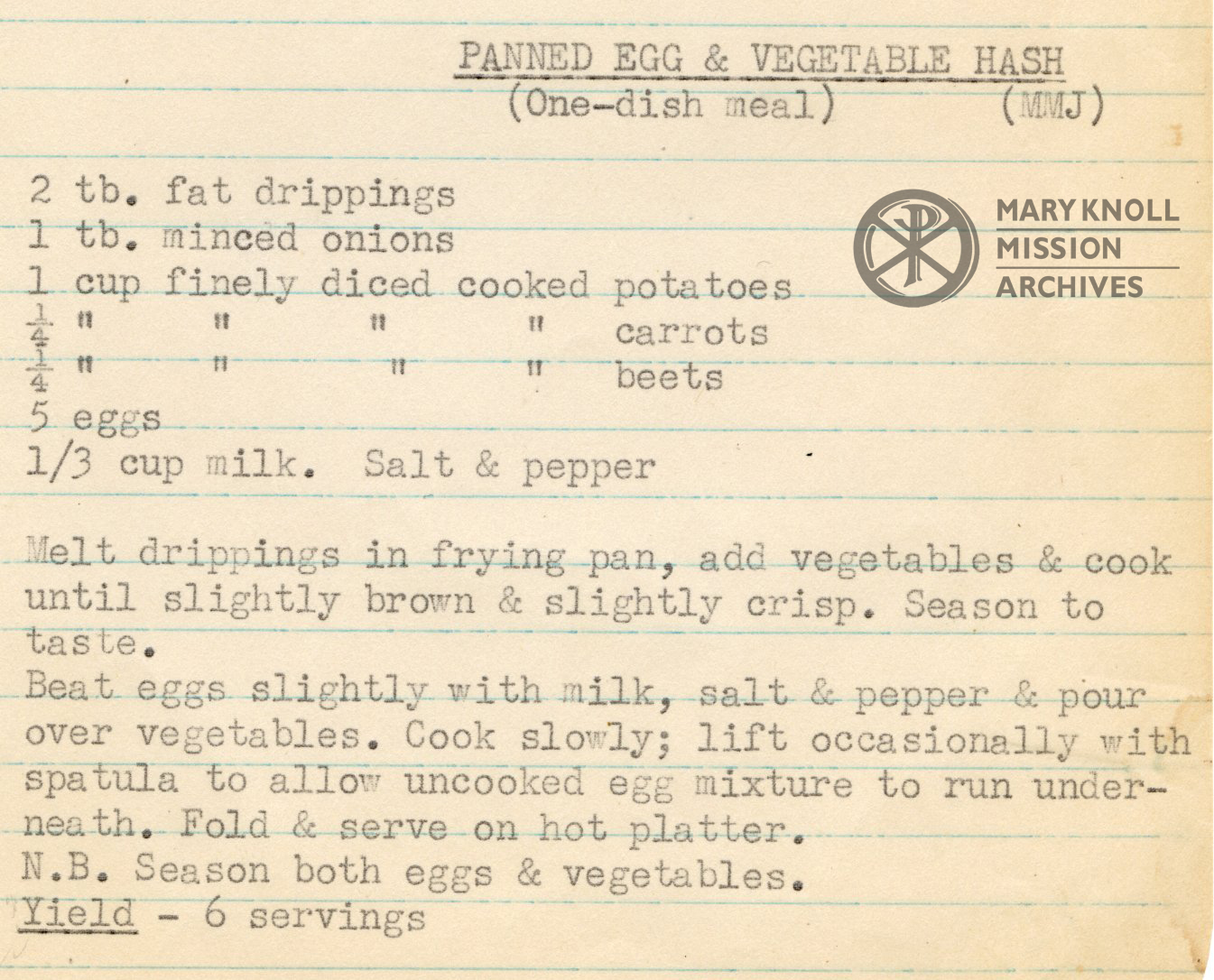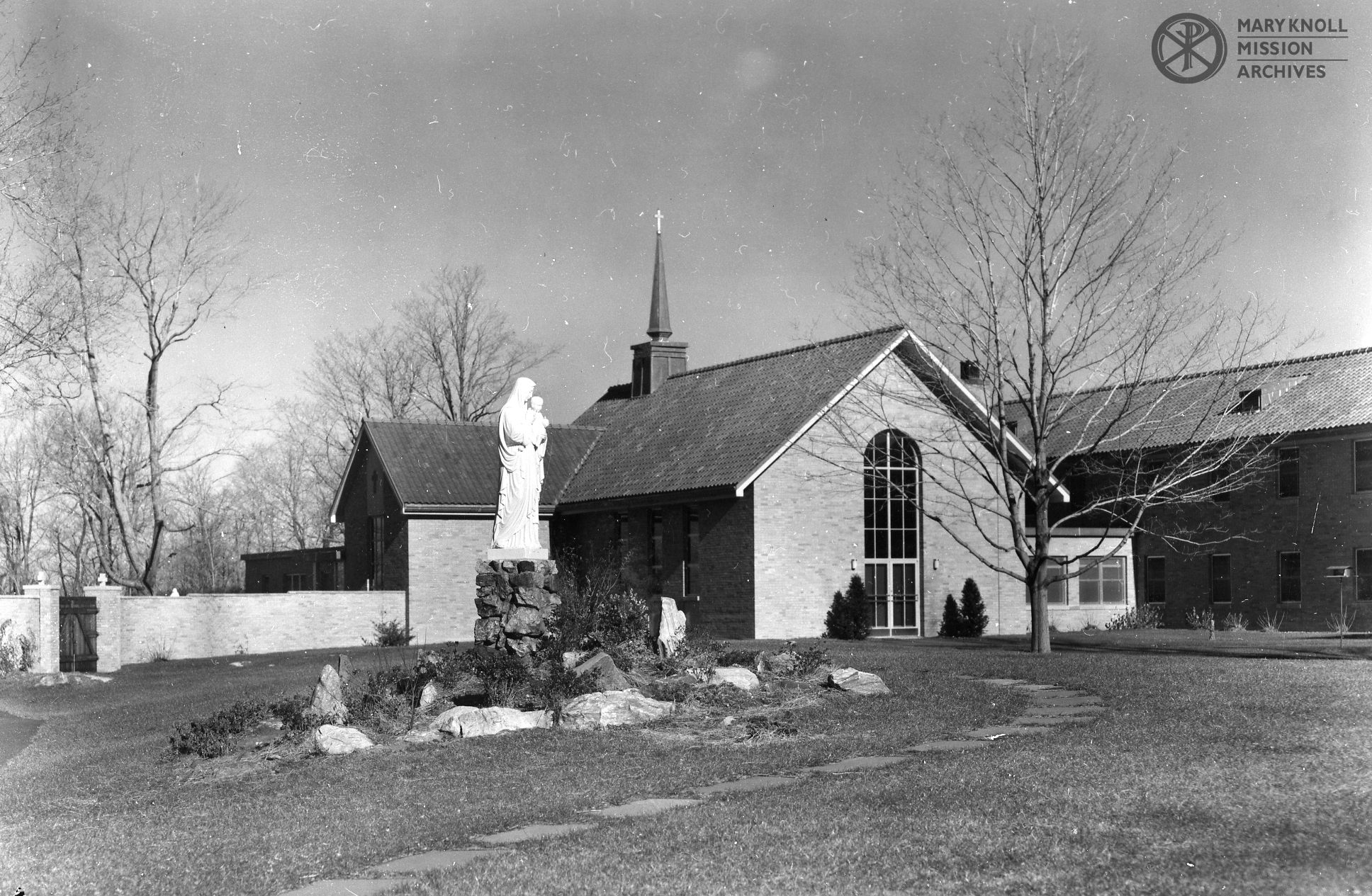While MMJ’s quote here is addressed to all Sisters, I think it would have struck a particular cord in those considering a life in contemplation. The Contemplative Maryknoll Sisters are a branch focused not on physical works, but the spiritual wellbeing of themselves and the community. They pray daily for the health and safety of Sisters on mission, as well as Maryknoll’s benefactors, so that Maryknoll may keep moving forward.
The first group of Contemplative Sisters went into the Cloister on October 4th, 1932. In an effort to learn more about these Sisters, I dove into the records. A few of our previous blog posts (here and here) gave me a good start, but I didn’t really understand how their life differed from that of the Mission Sister. I searched for a window into the average day of a Contemplative Sister, and was able to find an Horarium.
Letter From Mother Mary Joseph to all Sisters, Feast of All Saints, 1921
“[…] Now, our lives are made up of days, and since we can live but one at a time, it is good for us to stop occasionally and consider what is in a day – what a day means to us.
[…]
Let us then look at our days as a whole and see if they are such as will bring us closer to God…”
Daily Life
One method historians use to understand different cultures is to look at their daily routine. Through that, you can better understand what is important to the average person. In my search to better understand the Contemplative Sisters, I searched for an Horarium, Latin for “the hours”. This is a schedule for the day, usually posted in a common area and following a set general routine. The routine would change for Feast Days and periods of religious observation (such as Advent or Lent), but I want to focus on an average day.
To the right is an example of a usual Horarium, which I used as a springboard for learning about the different aspects of Contemplative life. In this blog post, I will highlight the uniqueness of life spent in contemplation. Through entries on the Horarium, I will briefly explore their daily routine in two sections: Community Living and Meals.
Community Living
Looking at the Horarium, we see that it mostly focuses on religious activities. For now, I want to look at the elements that symbolize the community living aspect of Contemplative life. In particular, I want to look at Work, Charges, and Recreation.
Work
Starting with Work, we see several entries on the Horarium: 930-1030, 1100-1200, 330/400-500. It comprises about 3 hours, or 1/6th of a Contemplative Sisters’ day. Work entails mostly domestic and clerical type jobs, such as cleaning, gardening, and cooking. In general, Work should be relegated to just enough to properly maintain the house and community, to allow the most possible time for prayer and contemplation. With the approval of the Mother General, Contemplative Sisters can also take on a variety of additional works, such as sewing, embroidery, making altar breads, artwork, and the sale of books and cards.
Charges
While Work reflects general tasks done by the community as a whole, Charges are duties assigned to specific Sisters. Charges are assigned by the Cloister Superior to each Sister based on what duties best suit that Sister skills. 900-930 is a time designated for Contemplative Sisters to accomplish their specific duties, though some duties contain responsibilities throughout the day.
An example of a Charge is the Regulator, in charge of keeping track of time and ringing bells to signal certain parts of the day. Charges were generally changed weekly, such as servers, readers, and the night regulators. Other Charges that took a long time to get accustomed to, such as the day regulator, were changed yearly. Charges that were suited to a small set of particular Sisters could be held for indefinite periods, only changing when necessary.
Recreation
Recreation is an important part of the Contemplative Sisters’ day, being the time when they are permitted to speak and be at rest. We see two Recreation periods on the Horarium: 1245-120, and 640-740. The hour in the evening was always kept, but the bit of time in the afternoon could fluctuate a bit. During vacations and feast days, additional recreation time was generally added.
Contemplative Sisters were encouraged to have some simple, easy, and quiet work to do for recreation. Nothing too strenuous, so proper rest could be achieved, but enough to idly occupy the Sister. Recreation was also a time where the Sisters could speak and mingle with each other openly. Though it was recommended that conversation should be simple and light hearted, in order to maintain the atmosphere of rest and relaxation. In a day filled with prayer, work, and duties, Recreation was important for the Sisters.
Meals
The most intriguing section to research was the Meals for the Contemplative Sisters. In our records for the Community is the Cloister Cookbook, featured in a previous blog post. I was most interested in the 9 page section at the beginning of the book, which outlines the aim and guidelines of nourishing cooking for both the body and soul. The goal was to create dishes that were simple and relatively plain, but not unappealing or unappetizing. While minimal seasonings are used, the food should not be bland.
These guidelines also advocated for little waste, buying ingredients in season, utilization of leftovers for later meals, and dissuaded from extravagant preparation or presentation. The cookbook also gives general rules for what type of food and drinks to serve with each meal, as well as what details a “well balanced meal”. Such a meal should include something hot, cold, sweet, tart, cooked, raw, soft, and hard. Below you can find my best take on a “well balanced meal” along with some of the more interesting guidelines for that time of day.
Breakfast
First meal of the day is Breakfast, which is served after Chapter between 630 and 830. Bread is always served at breakfast, at least a 2 ounce portion, with a plate of extras during non-fasting season. Butter and Jellies are also served during the non-fasting season, unless the bread is sufficiently rich. As well, there is usually an additional item of food, something hearty for energy during the day. To drink, coffee is almost exclusively served with Breakfast, alongside milk on non-fasting days or some other drink, such as fruit juice during feast days (No Seconds!).
For my example meal, I have two slices of bread, about 2 ounces, with some butter and peach jam. Alongside it is Poor Man’s Cake, a recipe created to stretch flour into a nourishing, dense cake. Poor Man’s Cake is more akin to a quick bread, something like banana bread, although much denser. Its a particularly good recipe, especially if you like raisins, with just enough spice to impart flavor without being overpowering.
Dinner
For Dinner, the Contemplative Sisters were looking for a nourishing midday meal, served at 1200. Bread is not normally apportioned for Dinner, expect when specified by a recipe. Occasionally raw vegetables made into a slaw may be served, but generally salads are reserved for Supper (except during the fasting season). Fruit is ordinally served with Dinner when in season. Ordinally you would receive fruit juice or tea to drink, with coffee rarely. Soup is never served at Dinner, except as a thin soup instead of tea.
My example meal here comes partly from the book, where a sample menu includes Peaceable Rarebit. This is a thick cheese sauce filled with peas (fresh or frozen), a good protein substitute. I have served this on plain toast, alongside some fresh fruit and some fresh grilled squash. This meal shows a focus on using items in season, fresh and cheaply bought.
Supper
For our final meal, served at 600, we have Supper. This is when soups and salads are served, though soup is only on Sundays, or during the week in non-fasting season. For salad, we typically would see a type of coleslaw with fruit or something with greens. When used with a hot dish, the salad should be as simple as possible. Cereals are also served during supper, either hot or cold, though make sure there isn’t too much sweetness. To drink, we have tea, fruit juice, or cocoa, but never coffee. Lastly, as a rule only one slice of bread is served at Supper.
For our example Supper, we have a panned egg and vegetable hash with our slice of bread, greens and a thin soup. We are allowed butter, jelly, or cheese for our bread. Since the egg and vegetable hash and soup are hot dishes, I kept the greens simple.
Dessert
There are no guidelines of when to serve Dessert, but from what I can tell it usually should be at dinner. The Cloister would receive a dessert from the Motherhouse on Sundays and feast days. Contemplative Sisters could also bake a cake once during the week. Dessert would usually be Ice cream or cake, though at times fresh fruit or cookies would be served.
For our dessert, we have Mapleine Brownies. Mapleine is an imitation maple extract that people would use to create a maple flavor, and you can still find it online. However, due to the prevalence of maple syrup nowadays, you will get much better results using the real thing.
Thank you for joining me as I briefly explored the daily life of a Contemplative Maryknoll Sister. Hopefully this post will shine a bit of light on an integral part of the Maryknoll Sisters. Now we shall end as we began this post, with Mother Mary Joseph:
The Cloister
We believe the Cloister must be a real integral part of Maryknoll,
just as any local house.
This particular house, operating under a slightly different rule,
will have prayer for the missions as its object,
as other houses will have the active apostolate.
It will be a component part of the whole Congregation.
Our Idea would be to have such a cloistered community
in each of the regions where we work.
It will be the completion of our Foreign Mission Congregation,
and our work will not receive its fullest blessings
until we have such a branch –
a development perfectly consistent with the desires of the Church.
Mother Mary Joseph Rogers, 1931


